Wave power plants - examples of three projects
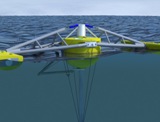 The energy of ocean waves exceeds the specific power of both wind and solar energy… The average power of the waves of the oceans and seas exceeds 15 kW per linear meter, and with a wave height of 2 meters, the power can reach all 80 kW per linear meter.
The energy of ocean waves exceeds the specific power of both wind and solar energy… The average power of the waves of the oceans and seas exceeds 15 kW per linear meter, and with a wave height of 2 meters, the power can reach all 80 kW per linear meter.
When converting wave energy, the efficiency can be significantly higher than other alternative methods such as wind and solar power plants, reaching 85% efficiency.

Energy from sea rolling can be obtained by converting the up-and-down oscillating motion of the waves into electrical energy through a generator. In the simplest case, the generator should receive shaft torque, while there should not be many intermediate conversions, and most of the equipment should be located as much as possible on land.
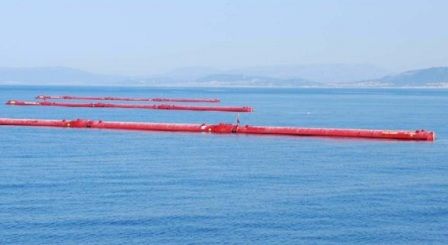
The first industrial version of the wave power plant, built by the Scottish company Pelamis Wave Power, went into operation in 2008, 5 kilometers from the coast at Povua de Varzin, in the Agusadora region, Portugal.The power plant is called Pelamis P-750. It consists of three identical transducers swaying on the waves of the Atlantic Ocean, and together generating 2.25 MW of electrical energy. Each converter consists of four sections.
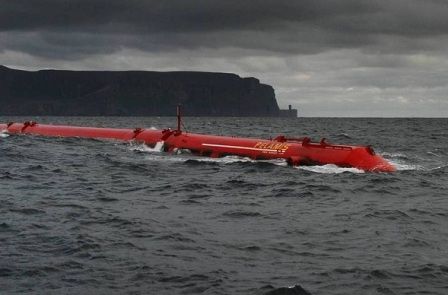
The converters are 120 meters long, 3.5 meters in diameter and weigh 750 tons. These serpentines are similar to floating convoys of four cars or sea kites as the locals call them.
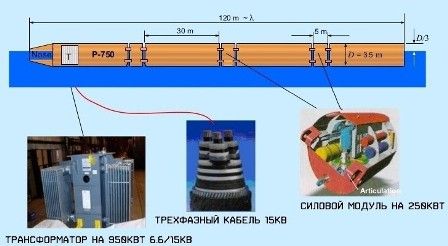
Each section contains a hydraulic motor and generator. Hydraulic motors are driven by oil that moves pistons, which in turn are controlled by the up and down movement of the joints in waves. The joints contain special power modules designed to work most efficiently with the pistons.
Hydraulic motors turn generators, which in turn generate electricity. Electricity is supplied to shore via power cables. This energy is enough to power 1,600 houses in the coastal town of Pauvoa de Varzin.
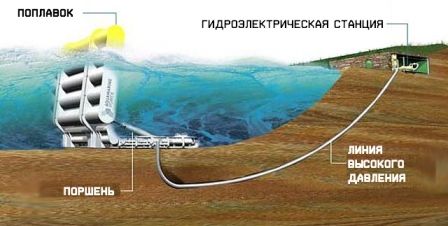
In 2009, another unique structure was launched off the coast of the Orkney Islands, in the north of Scotland, which generates energy from the waves of the North Sea. It was designed and built by the Edinburgh company Aquamarine Power, the «Oyster» generator, which means «Oyster».
The project is a large floating pump that swings back and forth in waves and thus drives a two-way pump located on the bottom at a depth of about 16 meters.
The design feature is that the entire electrical part of the device is brought ashore, and the connection between these two parts - the float pump and the land-based power plant - is through a pipe through which seawater flows under pressure to the hydroelectric generator.
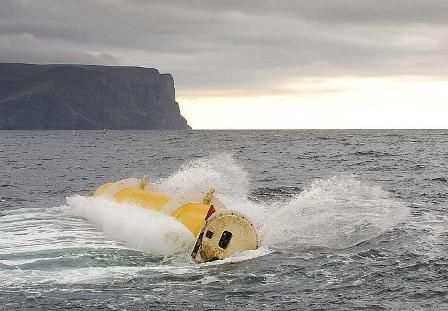
This station supplies electricity to several hundred houses, and the maximum power that the system can develop is 600 kW.
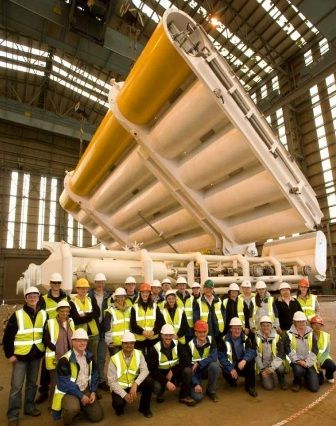
Aquamarine Power believes the Oyster project is just the first step. The company is considering building a fleet of 20 such units that could generate megawatts of electricity to power 9,000 private homes. Another option could be the construction of a complex of several floating pumps working on a powerful land-based hydroelectric turbine.
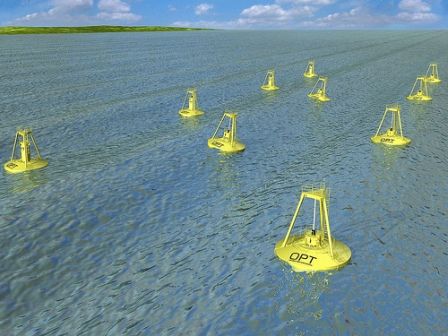
In the same 2009, in Great Britain, off the coast of Cornwall, the construction of the complex of Wave Hub wave generators, which are connected to the shore using a power cable, began. A set of generators branded PowerBuoy, an American company Ocean Power Technologies, works by vertical movement of floats that slide on columns anchored at the bottom. The depth where the columns are installed is 50 meters and the total capacity of the system of 400 buoys will be a total of 50 MW.
It is the largest wave power plant in the world and its construction is planned to take 5 years. The buoys are located in the sea, starting at a distance of 16 kilometers from the coast where the city of Hailey is located, and further, over 1,800 meters, a total of 400 such buoys are to be deployed. The project is constantly (still) developing and the technical data is different everywhere. According to the latest unofficial data, the maximum power of 20 MW has been reached.
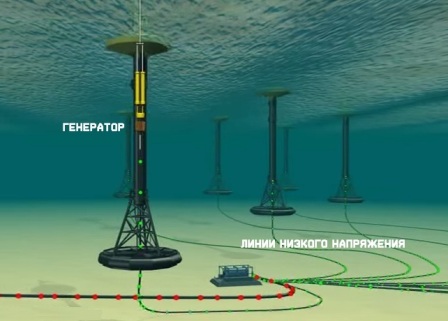
The buoys are arranged as follows. The column contains a generator inside which is driven by a system of pistons and generates electricity when the buoy vibrates against the waves. Electricity from each buoy it is transmitted by wire to an underwater substation, from which a power cable transmits electricity to land.
